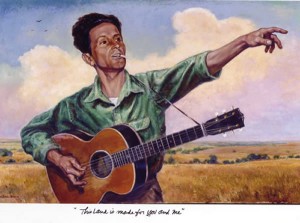A recent report lamenting the fact that some federal land is not open to the public was ironic, to say the most. The paper documented 4 million acres of “landlocked” areas in Colorado, Idaho, Montana, New Mexico, Utah and Wyoming that are inaccessible to the public.
 Written by a Denver environmental group called the Center for Western Priorities, the 15-page document attracted lots of press attention and considerable criticism. It simply explained that many areas owned by the public cannot be accessed by the public, but this report had a different take than usual. It talked about public lands that are closed to public access – not because they were declared wilderness, or wilderness study areas, national conservation areas, critical habitat, sensitive watersheds, wild and scenic rivers, roadless areas, research natural areas, or (my personal favorite) areas of critical environmental concern. Nor are these lands inaccessible because roads, trails or boat ramps were closed by the BLM, Forest Service, or Park Service.
Written by a Denver environmental group called the Center for Western Priorities, the 15-page document attracted lots of press attention and considerable criticism. It simply explained that many areas owned by the public cannot be accessed by the public, but this report had a different take than usual. It talked about public lands that are closed to public access – not because they were declared wilderness, or wilderness study areas, national conservation areas, critical habitat, sensitive watersheds, wild and scenic rivers, roadless areas, research natural areas, or (my personal favorite) areas of critical environmental concern. Nor are these lands inaccessible because roads, trails or boat ramps were closed by the BLM, Forest Service, or Park Service.
Instead, this report highlighted areas that are not open to the public because they are surrounded by private land. And true to form, it advocated spending lots of tax money buying such private land to solve the problem.
Apparently, Montana has an estimated 1.9 million acres of such “landlocked” areas, the most of any state (my home state of Colorado has half a million such acres). The analysis also mentioned the Sabinoso Wilderness and the Cowboy Springs Wilderness Study Area in New Mexico, as well as the Fortification Creek Wilderness Study Area in Wyoming. That is not a misprint. This report decried the fact that some wilderness areas are not open to the public.
That last part may sound ironic, since wilderness areas are by definition closed to anyone who doesn’t have a horse and can’t walk for miles. But consider that the distinction lost on so many of the report’s critics is not with the word “wilderness.” People on both sides understand that wilderness areas were always intended by Congress to be closed to almost all public use. Rather, the confusion lies in different understandings of the word “public.”
You see, when some activists (such as the authors of this report) talk about the importance of public access, they don’t mean everyone, or even all taxpayers. For instance, if you want to access public lands for snowmobiling, you are not part of their public. If you worry about dependence on foreign energy and want more production on America’s own land, you are not part of their public. If you are into ranching, lumber, off-roading, or skiing, you are not part of their public.
In case it is unclear which public they worry about, the report explained, “These shuttered public lands dramatically reduce opportunities for outdoor recreation, such as hiking, hunting, fishing and horseback riding, and stymie the United States’ burgeoning $646 billion outdoor recreation economy.” To be sure, that economy is vital to many Western States, including Colorado, where the Outdoor Industry Association estimates that residents spend $13 billion a year on outdoor recreation. But does that make these particular uses of public lands more important than others? Does it mean these lands are reserved only for people with those priorities?
All my life, westerners have argued over the right uses of public lands, and have always generally divided into the multiple-use or preservation camps. Sadly, that has resulted in a completely unnecessary us-against-them approach.
The history of public lands makes clear that both sides have equal places. The early writings of Theodore Roosevelt, Gifford Pinchot, and many other conservation pioneers contained three essential concepts. First, resources must be used wisely to supply the resources needed for a prosperous economy. Second, resources must be renewed and preserved so they will still be available for future generations. The conflict between those two concepts forms the basis for nearly all environmental arguments to this day. But there was also a third essential concept, nearly lost in the modern debate, that resources must be available equally to all people, not held as the province of an elite few.
In those days, the elitists were the barons of industry, but today it is often the environmental leaders who seek to reserve public lands for their favored uses. These lands belong to the future, but also the present. And their resources belong to ALL the people, not just loggers and drillers, and not just environmentalists. “This land is your land – this land is my land… this land was made for you and me.”
(A version of this column originally appeared in the Grand Junction Daily Sentinel April 24, 2015)




Comments on this entry are closed.